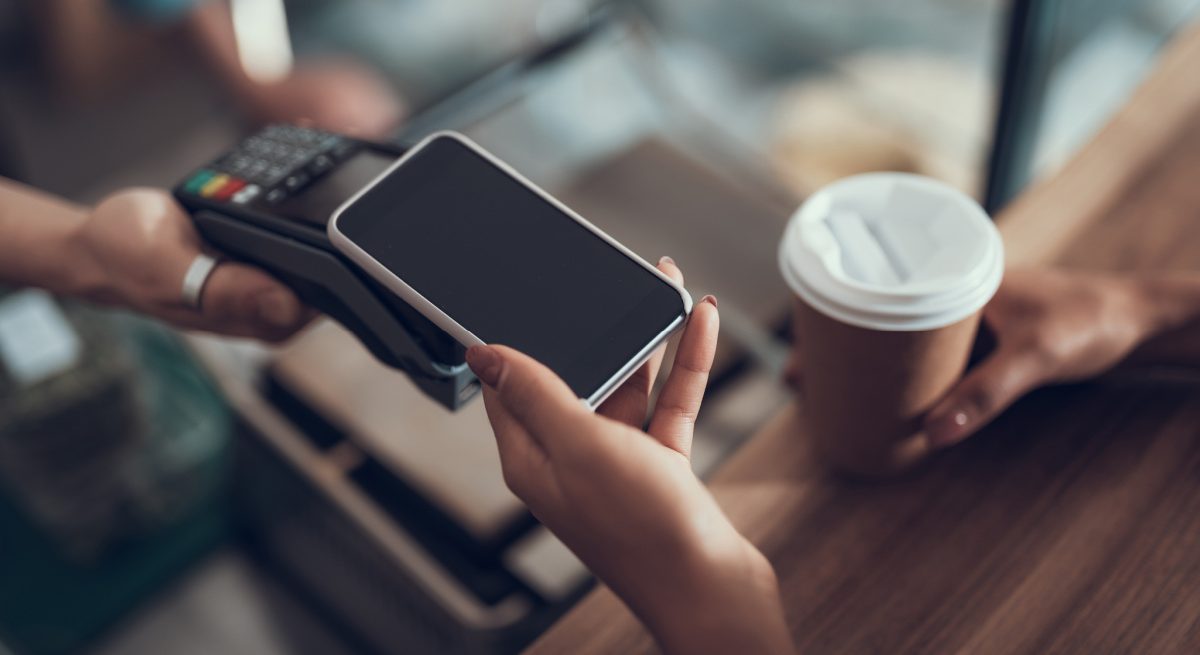Competition’s Coming: Key Technology Changes Can Help You Win
6 Min Read By Jonathan Tibus , Kevin Smilie, Jonathan Sharp
When the pandemic hit, many restaurants focused on expenses. Menus were trimmed to a fraction of original size. Delivery and curbside pick-up reduced on-site staffing. Inventory stock changed significantly.
While what consumers eat won’t change, post-COVID-19, how they will get it will. The ingrained customer behavior over the past year, delivery, mobile orders, curbside pick-up, will likely continue. The pandemic effectively accelerated trends in how restaurants interact with customers. And that’s where restaurants can pivot to focus on growth, not just cutting expenses.
How? By improving customer loyalty and increasing revenue through the smart use of technology from the public-facing part of the business all the way to the back-of-house prep, sourcing, and staffing.
While some automation and technology solutions can require quite an investment, there are plenty of things to enhance your presence, improve efficiency and tempt consumers that are more cost effective and expedient to implement.
Here’s a guideline to facing renewed competition with a digital mindset.
Digitize Your Ordering Function and Enhance Your Presence
In the near future, we’ll look at printed menus the way we look back at newspapers today. Archaic and revenue draining. Making digital enhancements to menus and adding kiosks on site can help not only reduce costs but catalyze revenue advantages.
Besides, consumers are already thinking digital first. Just prior to the pandemic, off-premises orders accounted for 60 percent of restaurant engagements, according to a National Restaurant Association report. Lavu, the restaurant technology services company, estimates 42 percent of food purchases are made online.
What’s more, consumers tend to spend extra on their food when ordering by themselves, either through kiosks or branded apps. During the pandemic, consumers spent 50 percent more when ordering online for takeout, a new habit that accounted for 89 percent of digital takeout spending, according to Paytronix and PYMTS’s Delivering on Restaurant Rewards report.
Restaurants have responded to capture more off-premises sales by improving digital menus, whether found in-app, through a Google search or on store screens. About 88 percent say they will consider moving from paper to digital menus this year, according to Square’s Future of Restaurant 2021 Report.
These non-paper menus can be changed swiftly, allowing restaurants to remove items when inventory lags and promote items that have higher margin. That ability coupled with multiple predictive behavioral data sources via artificial intelligence (AI), can more accurately estimate demand at various times of the day based on foot traffic, weather, or search results.
Digitizing your menus can have a powerful impact because the information is typically scraped online by third-party affinity sources, such as Yelp and TripAdvisor, who collect data for their customers. For example, customers using these sources are searching for restaurants with information about allergens, vegan offerings and other consumer concerns and interests.
Similarly, third-party delivery services such as DoorDash and Uber Eats, which each reportedly doubled their business last year, rely on restaurant digital menus. The delivery service trend is expected to continue as consumers have become accustomed to the convenience. Yet, consumers and restaurants prefer a more direct channel. Third-party fees to restaurants can run 15-30 percent, eating margin on delivery orders. Plus, 43 percent of consumers told business news and insights website The Manifest that they prefer to order delivery from restaurants directly rather than from a third-party service. More restaurants are also considering hiring their own courier service to deliver food directly to customers or linking up with aggregating sales platforms as a way to preserve margin.
Improve Order Size and Revenue with Predictive Technology
Whether through third-party sources or on-site signage, restaurants are relying more and more on data to day-part screens and menus as a way to boost per-order revenue. By customizing menus based on a local sporting event, time of day and even the weather, digital screens can suggest items to add to orders or promote high-margin combo meals just when consumers are hungriest.
McDonald’s is using artificial intelligence to predict consumer behavior and recommend associated items to increase order sizes. After purchasing data decision logic technology, as reported in 2019, the restaurant chain now collects as much information about consumers as it can to determine when, why and how they make a purchase at any given time of the day. As its menus adapt to consumer behavior, this technology could drive larger and faster orders – and higher revenue..
But one of the biggest digital investments restaurants can make is in advertising. It’s also one of the easiest to implement and gets the most engagement. Focus digital marketing on upsales by extending an offer while consumers are on site or creating an order off-premises. Digital ads aren’t confined to apps and kiosks, they can roam the internet and other channels to drive consumers to order.
Source More Smartly by Linking FOH to the BOH
AI and digital technology aren’t just for the front of house. In the best of circumstances, they should be linked to inventory and automated kitchens. In fact, the automating and upselling that occurs through predictive digital menus can lead to better management of inventory levels, preserving shelf time on low stock items, say onion rings, and recommending overstocked items such as fries. Smart operators are finding ways to connect supply chain technology with front-of-house demand.
By optimizing inventory to meet demand and menu offers, restaurants can also minimize costs and waste. If restaurants can predict how many beef patties they’ll need on a stormy Thursday or icy drinks on a hot summer afternoon, they can keep from over buying or reduce the risk of low inventory. If the menu is correctly aligned with demand, it can drive the supplies needed.
Restaurants can also track food and beverage stocks through software and online aggregate buying services such as Foodbuy. Tying the inventory management platform to the AI structures can help keep restaurants nimble and margin-positive by reducing labor and cutting back on waste. Linking the buying service to the inventory management system improves the just-in-time supply chain performance, which can also shorten the order-to-pickup time window for the consumer.
Try Different Technologies to Make Operations Super-Efficient
While customer menus have shrunk, the menu of actions that restauranteurs must take to stay competitive has expanded. In addition to the major changes highlighted above, there are a host of operations and technology changes that can combine to drive true competitive value.
Below is a quick roundup of areas where restaurants can trim margin or boost revenue to remain competitive. Prioritizing and sequencing these changes is not easy but can pay off in the right circumstances.
Robotics: In the kitchen, automating prep work as much as possible will help to expand margin and cut waste. While adding technology can be capital intensive and out of the reach of smaller restaurants, some operators are finding success with offsite solutions, where services are shared among non-competitors to prep foods on a larger scale. Robotic machines can take bulk ingredients and turn out precisely cut slices, saving on food costs and waste, for example.
Ghost Kitchens: Unlike a shared or virtual kitchen, ghost kitchens are intended to be a direct kitchen-to-delivery model for virtual brands. Think, no brick and mortar, no association with primary brands. Restaurants can use excess ingredients to create unique brands and items that have an online only presence and are available through third-party delivery apps. The model cuts down on overhead, leverages existing fixed costs and potentially improves the possibility operators can preserve some margin on deliveries.
Line Busting: Restaurants are extending Wi-Fi coverage to the drive-thru and having staff “bust the line” by walking back in the cue to take orders and payments using digital tablets. It speeds up the process, and staff have the opportunity for upselling.
Sampling: When restaurants closed their doors, customer interaction stalled or became non-existent. Smart restaurant operators are giving customers samples and recording the data to ask later how they enjoyed them. It heightens interaction, builds brand loyalty and adds to the customer digital profile so they can suggest sampled products on future orders.
B2B Background Services: Digital ordering and delivery platforms can help trim the commission costs of delivery vendors. Working in the background, the platform allows customers to order from multiple sale points, from brand apps, to social media, to third-party services, and provides restaurant with analytic data.
Don’t Confuse Customer Communications with Customer Loyalty
Loyalty is prized, but it’s not the same as effective communication. One precedes the other. The good news is that by using any number of these technologies and collecting the numerous points of data, you should be able to create better, more effective means of communication. It is only through reliable, consistent, effective communications, via digital screens, internet advertising, third-party delivery program and other functions, that loyalty and brand commitment is developed.
Communications through technology forms the basis of customer loyalty and fulfills customer needs at the same time. Absent this effective communication, and the quality of your product, there is no loyalty.
Whether you’re ready to digitize your whole operation or simply add dynamic menu or digital ads, think of consumers’ new mindset about the restaurants they frequent. Focus on technology that positions you to grow as you communicate better with your customer base.
Mark Roberts and David Ritter contributed to this article.




